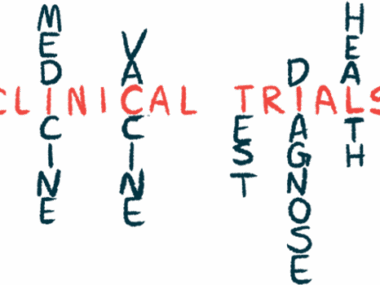High blood calcium levels may be sign of sarcoidosis: Case report
Man’s hypercalcemia eased with steroids, potassium
Written by |

High blood calcium levels, or hypercalcemia, may in rare cases be a symptom of sarcoidosis, according to a case report from Morocco.
Steroid medications helped ease the symptom for a man with severe hypercalcemia as a main complication of sarcoidosis of the lungs, or pulmonary sarcoidosis, according to the report, “Malignant Hypercalcemia Revealing Pulmonary Sarcoidosis,” published in Cureus.
Sarcoidosis, in which clumps of inflammatory cells called granulomas accumulate in the body’s tissues, can be difficult to identify in the clinic because it’s relatively rare and has a highly variable clinical presentation that may mimic other conditions.
Hypercalcemia, or high blood calcium level, is a possible sign of sarcoidosis. However, diagnosing sarcoidosis when hypercalcemia is the main symptom can be difficult because blood calcium can be altered in a wide range of diseases.
In the case report, the scientists described the diagnostic process for a 77-year-old man whose main symptom was hypercalcemia.
Tests reveal biomarkers for sarcoidosis
The man had come to the emergency room with “disturbed consciousness,” the researchers wrote. He was found to have an elevated heart rate, abnormal sounds from the lungs that could indicate obstructed air flow, and moderate kidney failure. Hypercalcemia, which can lead to loss of consciousness and kidney issues, was also identified.
To address the calcium levels and related symptoms, the man was started on standard hypercalcemia management, including into-the-vein hydration, medications to increase urine production, and pamidronate, a type of medicine called a bisphosphonate that helps lower blood calcium levels. His consciousness and calcium levels subsequently normalized.
The man underwent a battery of imaging and lab tests so the doctors could better understand the source of the problem.
They found two biomarkers in the blood that are linked to sarcoidosis: elevations in the angiotensin-converting enzyme and hypergammaglobulinemia, a condition in which the immune system produces too many antibodies.
Imaging showed signs of granulomas in the lungs, leading the scientists to believe the man had pulmonary sarcoidosis.
The source of hypercalcemia in sarcoidosis is the inappropriate production of active vitamin D from granulomas, according to the researchers. Vitamin D is important for the absorption of calcium, so when it is altered, calcium levels can rise.
The treatment for this issue “remains essentially medicinal,” the researchers wrote. Beyond standard hypercalcemia treatments, steroids may be an important component for treating sarcoidosis-related hypercalcemia, as these anti-inflammatory medications can help reduce calcium absorption as well as inhibit enzyme activity that causes excess vitamin D production from granulomas, they said.
The man was started on steroids as well as potassium supplements and gastric protection medication, and his hypercalcemia was eased.
“This case report shows a particular presentation of sarcoidosis, as malignant hypercalcemia is rarely the initial manifestation,” the researchers wrote. “The use of bisphosphonates, in association with the classic treatment of hypercalcemia by hyperdiuresis [excess urine production] and corticosteroid, is a therapeutic option in cases of severe hypercalcemia complicating sarcoidosis.”






